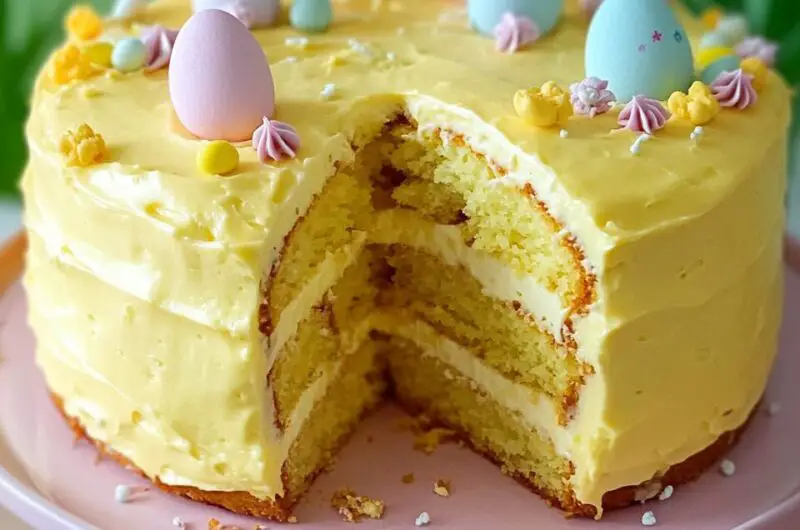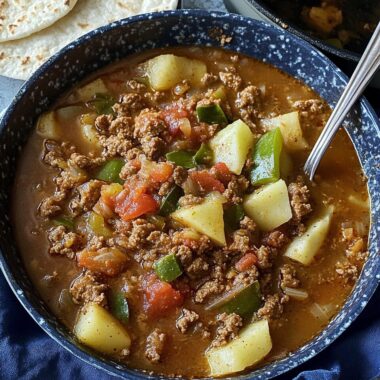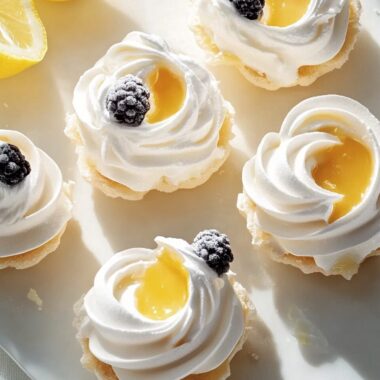Easter is a time for family gatherings, colorful decorations, and indulgent treats. Among the beloved traditional desserts is the Easter Homemade Yellow Cake, a classic choice that brings warmth and sweetness to any celebration. This delightful cake features a moist, buttery crumb paired with a rich and silky pastry cream frosting, making it a show-stopping centerpiece for your holiday table.
Full Recipe:
Ingredients:
For the Yellow Cake:
-
2 1/4 cups bleached cake flour
-
2 teaspoons baking powder
-
1/4 teaspoon baking soda
-
1/2 teaspoon sea salt
-
1 cup (2 sticks) unsalted butter, at cool room temperature
-
1 1/3 cups granulated sugar
-
3 large eggs, room temperature
-
2 large egg yolks, room temperature
-
2 teaspoons vanilla extract
-
1/4 cup sour cream or plain full-fat yogurt, at room temperature
-
3/4 cup whole milk, warmed
For the Pastry Cream:
-
5 large egg yolks
-
1/2 cup granulated sugar
-
3 tablespoons cornstarch
-
2 cups whole milk
-
1/4 teaspoon sea salt
-
4 tablespoons unsalted butter
-
2 teaspoons vanilla extract
Directions:
-
Preheat the oven to 350°F (175°C). Butter, flour, and line two 8-inch cake pans with parchment circles.
-
In a medium bowl, whisk together the cake flour, baking powder, baking soda, and sea salt.
-
In a large bowl, using an electric mixer, beat the unsalted butter on high speed until smooth and creamy, about 1 minute.
-
Add the granulated sugar and beat on high speed for 3 to 4 minutes until light and fluffy. Scrape down the bowl as needed.
-
Add the eggs and egg yolks one at a time, beating well after each addition. Mix in the vanilla extract.
-
Beat in the sour cream (or yogurt) until fully combined.
-
With the mixer on low speed, add the flour mixture in three additions, alternating with the warmed whole milk, beginning and ending with the flour mixture. Mix just until combined; do not overmix.
-
Divide the batter evenly between the prepared cake pans. Bake for 25 to 30 minutes, or until a toothpick inserted into the center comes out clean.
-
Let the cakes cool in the pans for 20 minutes, then turn them out onto a wire rack to cool completely.
To prepare the Pastry Cream:
-
In a medium saucepan, heat 1 1/2 cups of the whole milk and the vanilla extract over medium-high heat, stirring often, until it just begins to simmer. Remove from heat.
-
In a separate medium bowl, whisk together the remaining 1/2 cup of milk, egg yolks, granulated sugar, and cornstarch until smooth.
-
While whisking constantly, slowly pour the hot milk into the egg mixture to temper the eggs.
-
Return the mixture to the saucepan and cook over medium-high heat, whisking continuously, until it thickens and comes to a boil. Remove from heat.
-
Stir in the unsalted butter and sea salt until the butter is melted and the mixture is smooth.
-
Transfer the pastry cream to a bowl, cover with plastic wrap pressed directly onto the surface to prevent a skin from forming, and refrigerate until chilled.
To assemble the cake:
-
Place one cake layer on a serving plate or cake stand. Spread about one-third of the chilled pastry cream evenly over the top.
-
Place the second cake layer on top, upside-down to ensure a flat surface. Spread the remaining pastry cream over the top and sides of the cake, smoothing with an offset spatula.
Prep Time: 30 minutes | Cooking Time: 45 minutes | Total Time: 1 hour 15 minutes
Kcal: Approximately 450 kcal per serving | Servings: 12 slices
The History of Yellow Cake
Yellow cake has a long-standing history as a favorite dessert in American households. Its origins date back to the 19th century when baking powder became a widely available leavening agent. This innovation made it easier for home bakers to create light, fluffy cakes without the labor-intensive process of whipping egg whites. The characteristic golden hue of yellow cake comes from the generous use of egg yolks and butter, giving it a rich flavor and soft texture.
Over the years, yellow cake has evolved into a versatile dessert enjoyed at birthdays, weddings, and holiday celebrations. While many variations exist, the classic homemade version remains beloved for its simplicity and comforting taste. Paired with a creamy frosting, yellow cake is a timeless treat that appeals to all ages.
Why This Yellow Cake Recipe Stands Out
What makes this Easter Homemade Yellow Cake exceptional is the balance of flavors and textures. The cake itself is soft and tender, with a delicate crumb that melts in your mouth. The pastry cream frosting adds an indulgent touch, providing a luscious contrast to the lightness of the cake.
Unlike store-bought mixes, this homemade recipe uses wholesome, high-quality ingredients to ensure superior taste. Real butter, fresh eggs, and pure vanilla extract come together to create a cake that is both flavorful and aromatic. The addition of sour cream or yogurt enhances the cake’s moisture, preventing it from drying out and providing a subtle tanginess that balances the sweetness.
The Role of Pastry Cream Frosting
Pastry cream, also known as crème pâtissière, is a classic French custard made from egg yolks, sugar, milk, and cornstarch. It is often used in tarts, pastries, and layer cakes. For this recipe, the pastry cream serves as a luxurious frosting that sets this yellow cake apart from others.
The creamy texture and delicate sweetness of the pastry cream complement the buttery cake layers perfectly. It provides a smooth, glossy finish that enhances the cake’s visual appeal while offering a delightful contrast in every bite. By preparing the pastry cream from scratch, you ensure a fresh, velvety texture that is far superior to pre-made frostings.
Tips for Perfecting Your Easter Yellow Cake
Creating a homemade yellow cake requires attention to detail and a few essential techniques. Here are some tips to help you achieve the best results:
- Use Room Temperature Ingredients: Allow your butter, eggs, and dairy to come to room temperature before baking. This helps the ingredients incorporate more easily, resulting in a smoother batter and even baking.
- Measure Accurately: Baking is a precise science, and accurate measurements are crucial for success. Use a kitchen scale to measure dry ingredients by weight, ensuring consistency and accuracy.
- Don’t Overmix the Batter: Overmixing can lead to a dense, tough cake. Mix the batter just until the ingredients are combined to maintain a light and fluffy texture.
- Bake Evenly: Ensure your oven is fully preheated and place the cake pans on the center rack for even baking. Rotating the pans halfway through can also help prevent uneven browning.
- Chill the Pastry Cream: Allow the pastry cream to cool completely before assembling the cake. This prevents the cream from melting and ensures clean, smooth layers.
Decorating Ideas for Your Easter Cake
While the classic yellow cake is beautiful on its own, you can elevate its appearance with creative decorations that reflect the Easter spirit. Here are a few ideas to inspire you:
- Spring-Themed Garnishes: Adorn the cake with fresh edible flowers, pastel-colored sprinkles, or sugared berries for a festive touch.
- Easter Egg Toppers: Decorate the cake with miniature chocolate eggs or fondant bunny shapes to make it a fun centerpiece for your holiday table.
- Piped Designs: Use a piping bag to create intricate designs with the pastry cream or a complementary buttercream frosting.
- Layered Presentation: Create a multi-layered cake with alternating pastry cream and fruit fillings for added flavor and visual appeal.
Pairing Suggestions
A slice of Easter Homemade Yellow Cake pairs beautifully with a variety of beverages and accompaniments. Consider these options to complete your dessert experience:
- Tea or Coffee: The rich, buttery flavor of the cake complements the robust taste of freshly brewed coffee or a floral herbal tea.
- Sparkling Wine: Celebrate the holiday with a glass of sparkling wine or champagne, which provides a crisp contrast to the cake’s sweetness.
- Fresh Fruit: Serve the cake with a side of fresh berries or a fruit compote for a refreshing balance of flavors.
Why This Cake is Perfect for Easter
Easter is a celebration of renewal and joy, and a homemade yellow cake embodies these sentiments perfectly. Its warm, golden hue symbolizes sunshine and happiness, while the sweet, creamy layers evoke comfort and indulgence. Whether you serve it at a family brunch or as a dessert after Easter dinner, this cake is sure to bring smiles to everyone at the table.
Baking from scratch also adds a personal touch to your holiday celebration. Sharing a homemade dessert shows your loved ones how much you care and creates lasting memories around the table. Plus, the versatility of this cake allows you to customize it to suit your preferences and showcase your creativity.
Conclusion:
The Easter Homemade Yellow Cake is a timeless dessert that embodies the spirit of the season. Its moist, buttery layers and silky pastry cream frosting create an irresistible combination that is sure to delight your family and friends. With a little care and attention, you can craft a stunning cake that not only tastes delicious but also serves as a beautiful centerpiece for your Easter celebration.
Whether you’re an experienced baker or new to the kitchen, this recipe is accessible and rewarding. Embrace the joy of homemade baking and treat yourself and your loved ones to a slice of this classic cake. It’s the perfect way to sweeten your Easter festivities and create cherished memories for years to come.








